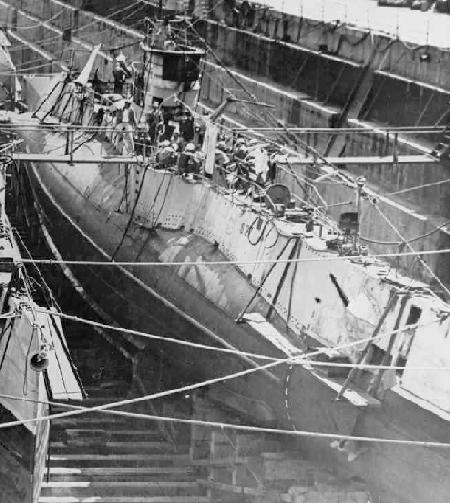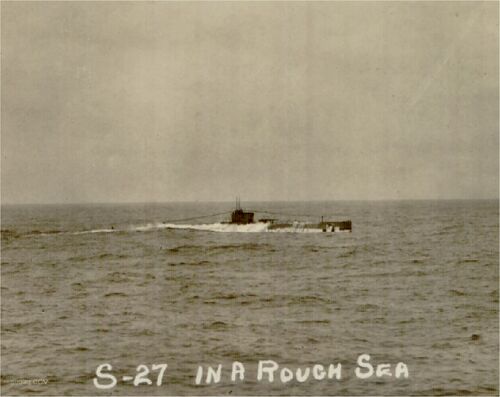S-27

This photo shows S-27 in her as-built configuration. She would be modified in the late 1920's in the wake of the S-4 disaster. The aft superstructure skeg tapering down to the rudder would be removed, and escape trunks would be added to the motor room and torpedo room. In addition, the deck and ventilator on the aft end of the fairwater would be raised to keep that area drier in heavy seas.
Original photo print in the private collection of Ric Hedman.

S-27 in drydock, likely at the Mare Island Navy Yard in Vallejo, California, approximately 1925. This was a busy refit period, with a lot of work going on topside.
Photo in the private collection of Ric Hedman.

Photo in the private collection of Ric Hedman.

Photo in the private collection of Ric Hedman. NOT a U.S. Navy photo.

This is a great overhead photo of the submarine tender USS Holland (AS-3) moored to a buoy off Naval Station San Diego, fall of 1939. Moored to Holland's starboard side is the S-27. The submarine had just returned from Hawaii and would spend the next two years operating on the west coast. In November 1941 S-27 would enter an overhaul period at Mare Island and would still be there when hostilities began the next month.
Moored in a nest on Holland's port side are Porpoise-class fleet boats Pollack (SS-180), Perch (SS-176), Pickerel (SS-177), and Plunger (SS-179). Also moored in the nest are the Salmon/Sargo-class boats Stingray (SS-186), Seal (SS-183), Salmon (SS-182), and all the way inboard is Sturgeon (SS-187).
Moored aft of S-27 are the Holland's four liberty launches, used to ferry the crew's of all of the boats back and forth to shore. Holland provided office and berthing space for the officers of the submarines, along with extensive repair and resupply capabilities. Holland was a fixture of the Pacific Fleet and at one time or another she could be found in any area of operation.
This photo likely was originally published in The National Geographic magazine, but a print is in the private collection of webmaster David Johnston.
Page created by:
Ric Hedman & David Johnston
1999 - 2023 - PigBoats.COM©
Mountlake Terrace, WA, Norfolk, VA
webmaster at pigboats dot com
